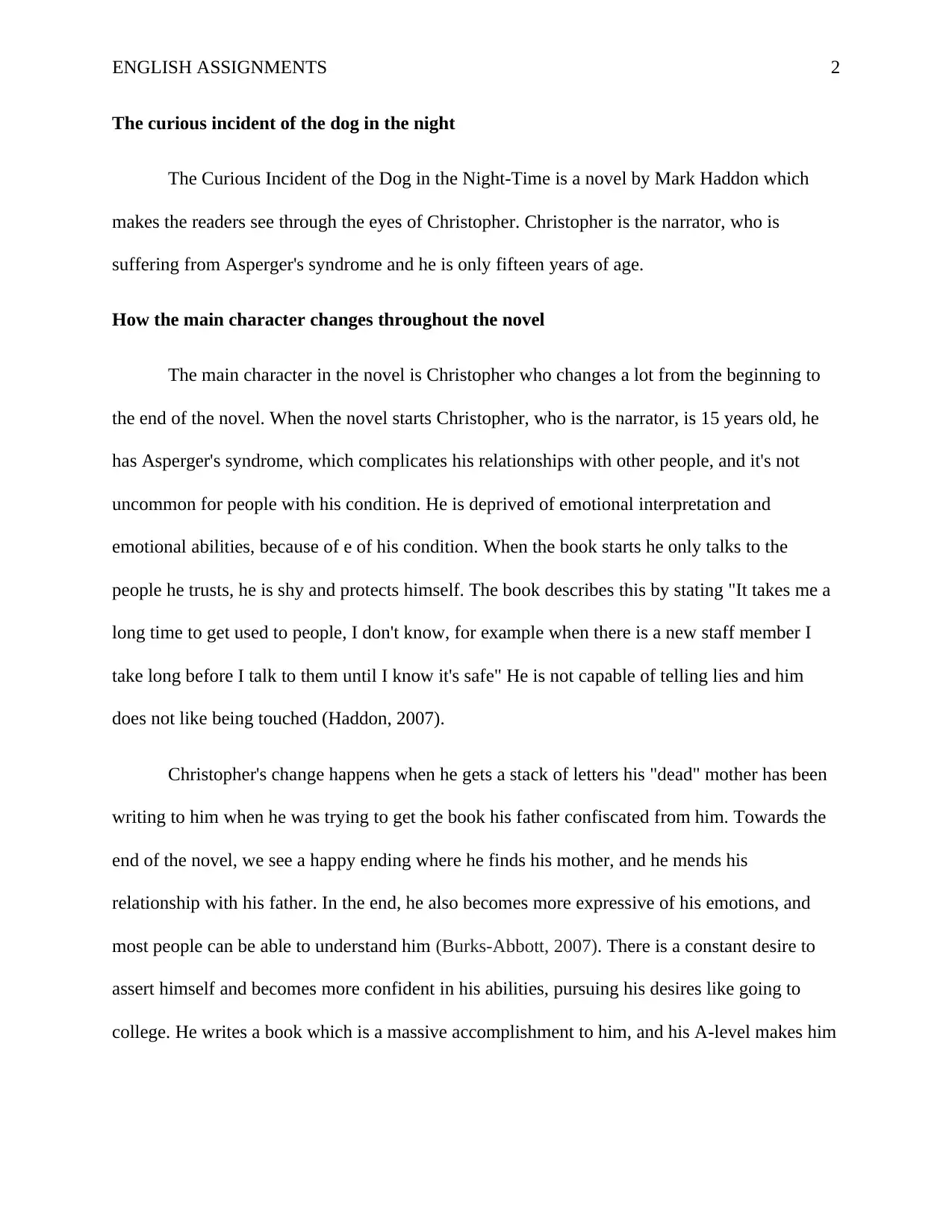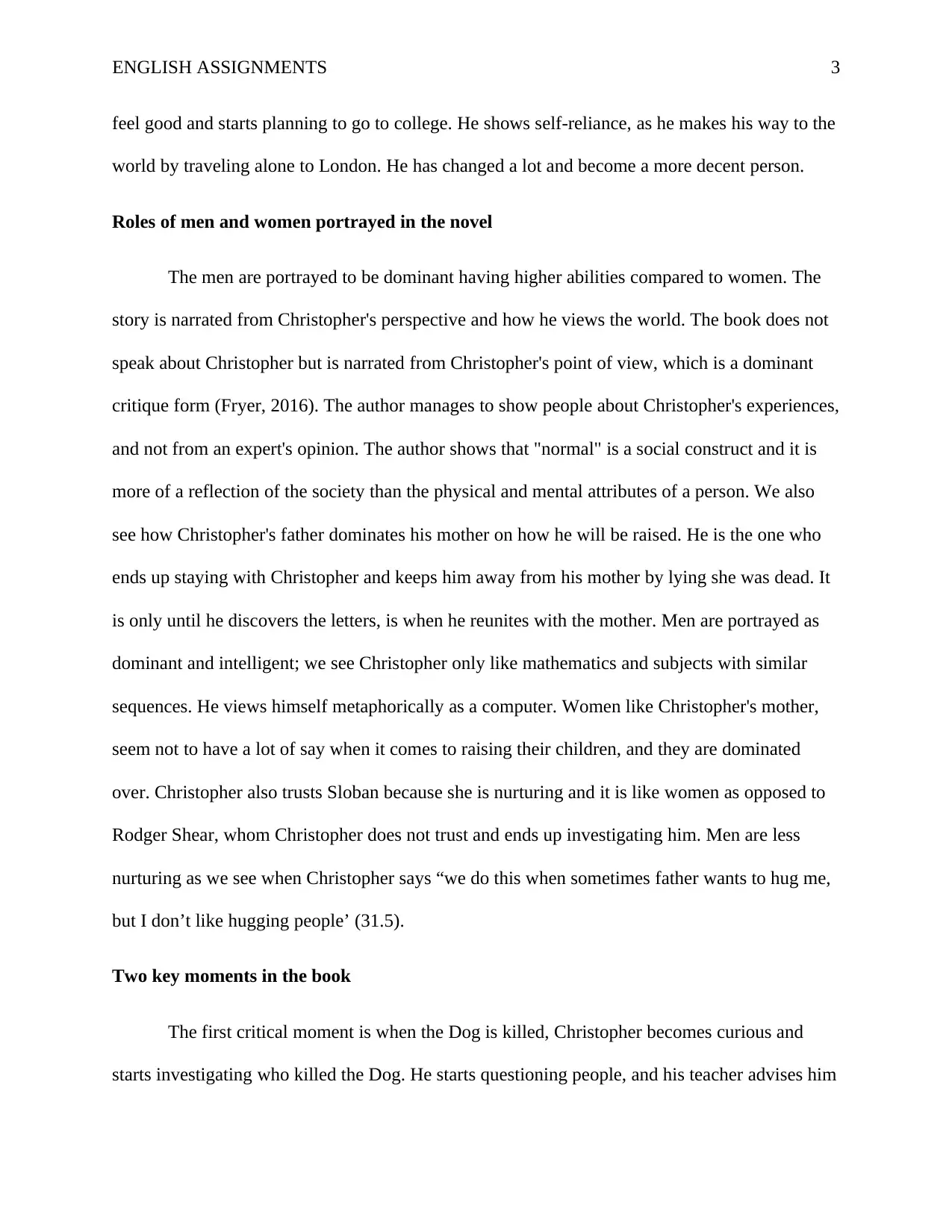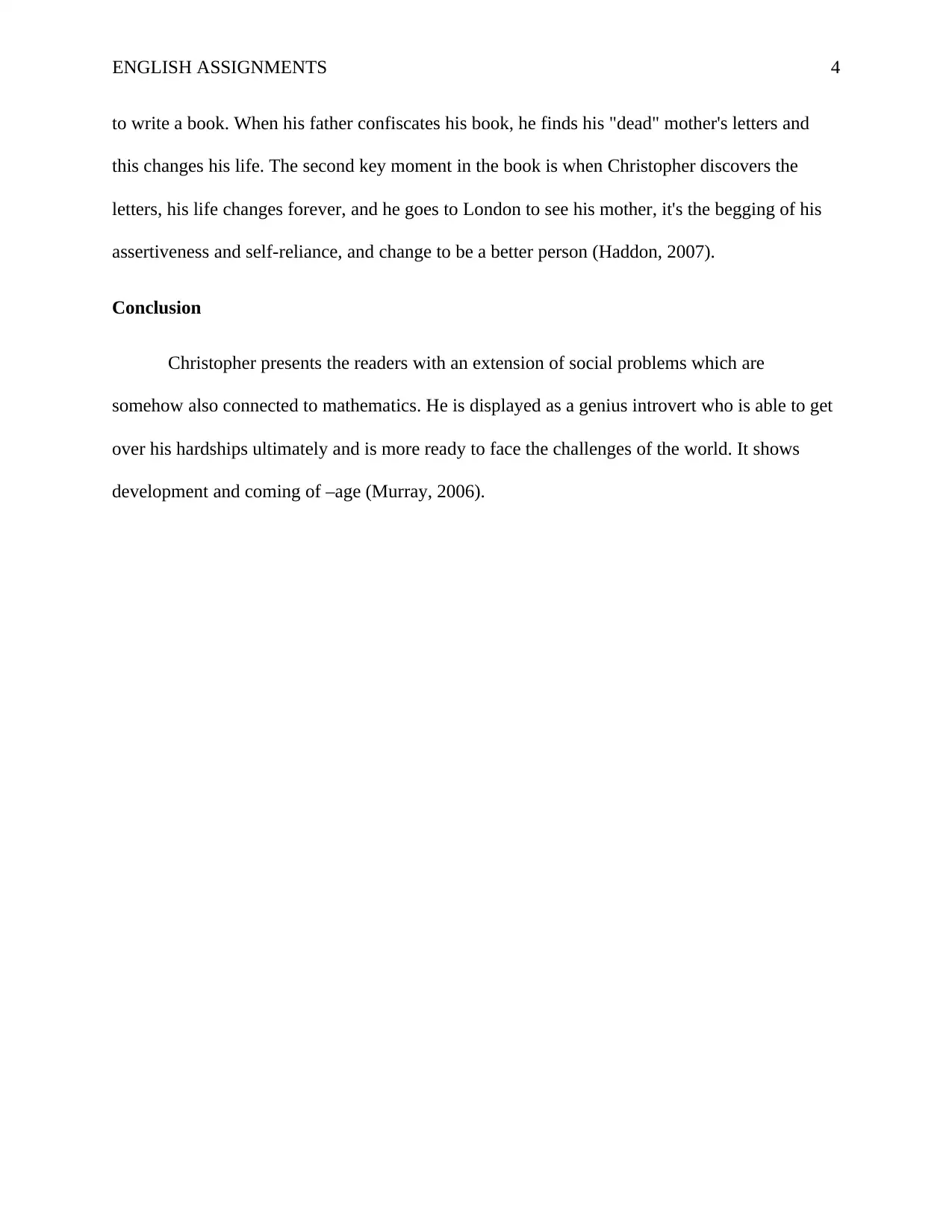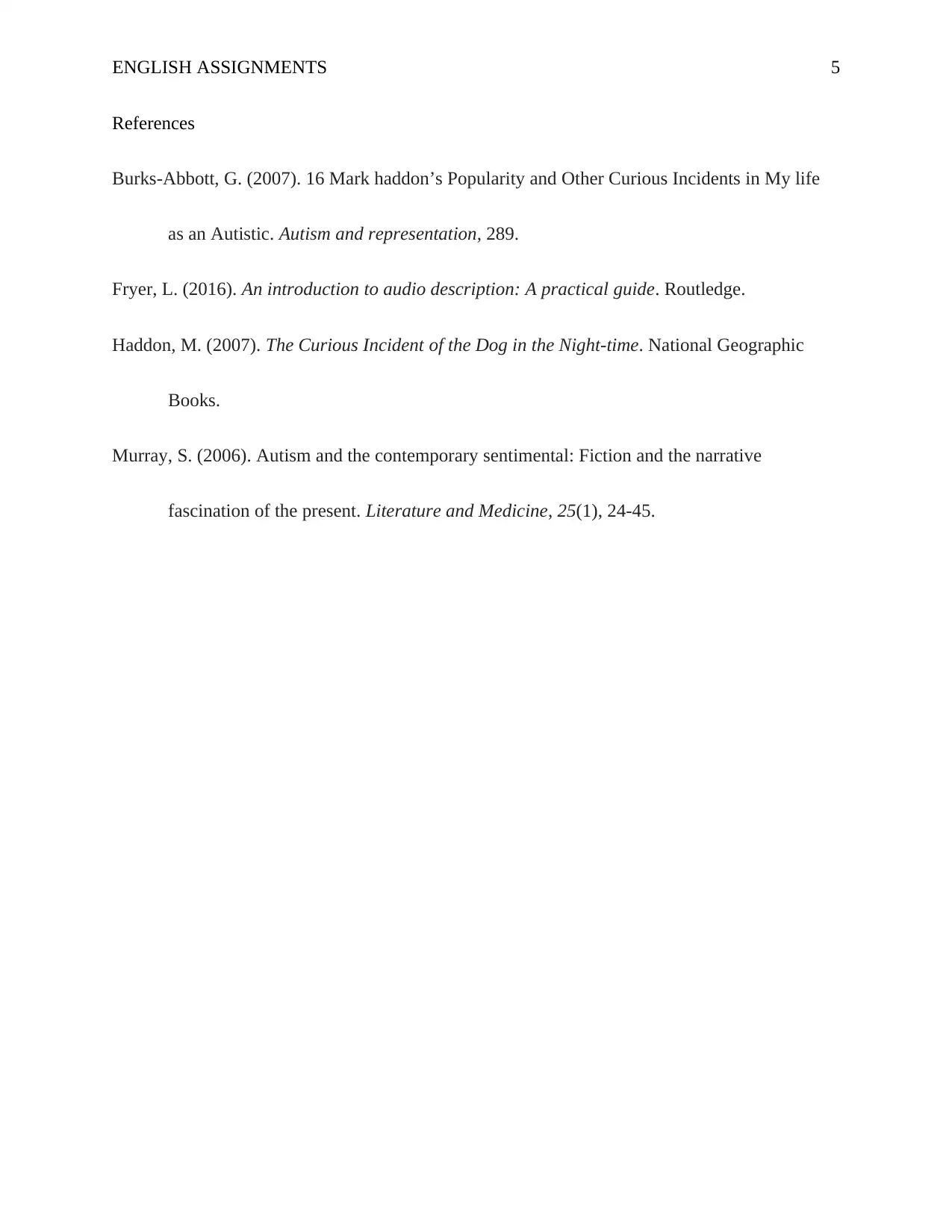Essay on Character Transformation & Societal Views in Haddon's Novel
VerifiedAdded on 2023/05/29
|5
|1008
|368
Essay
AI Summary
This essay provides an analysis of Mark Haddon's 'The Curious Incident of the Dog in the Night-Time,' focusing on the character development of Christopher, a 15-year-old with Asperger's syndrome, and the portrayal of gender roles within the novel. The essay highlights Christopher's transformation from a shy and emotionally detached individual to a more confident and self-reliant person who asserts himself and pursues his desires, such as attending college. It also examines how men are depicted as dominant figures, particularly Christopher's father, while women, like Christopher's mother, are shown as having less agency. The essay identifies key moments in the book, such as the discovery of the murdered dog and the revelation of his mother's letters, as catalysts for Christopher's growth and self-discovery, ultimately presenting him as a resilient character who overcomes his challenges and prepares to face the world. Desklib provides access to similar essays and study resources for students.
1 out of 5











![[object Object]](/_next/static/media/star-bottom.7253800d.svg)